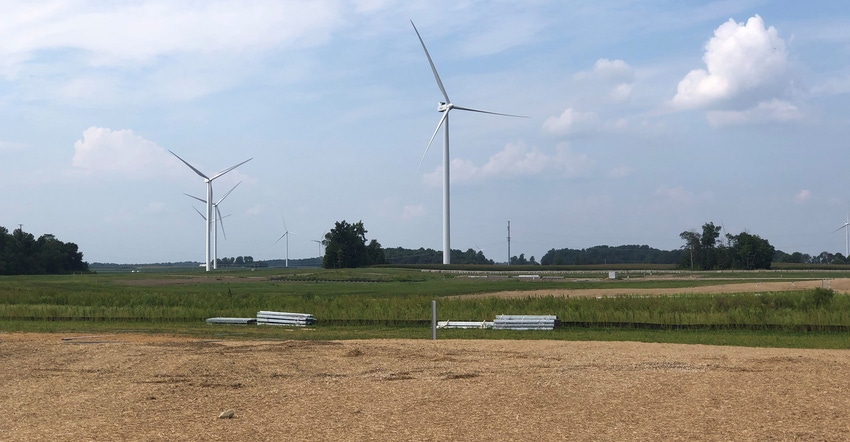August 15, 2022

The August issue of Indiana Prairie Farmer included stories about the potential for losing more prime farmland to development. It highlighted the findings of an American Farmland Trust study released earlier this summer that declared prime farmland across the country is under attack.
Some question whether their calculations about acres lost are accurate. Some even question whether USDA data on acres in production over the years is accurate. But few, if anyone, question that a sizable amount of farmland has already been converted to other uses.
Perhaps the most surprising comments growing out of the discussion prompted by the AFT study are that people perceive subdivisions, residential houses and commercial developments aren’t the only reasons prime farmland is disappearing. Several say the rush toward alternative energy, both wind farms and solar, is taking prime farmland out of production too.
Because of differences in how the two forms of energy are captured, solar eats up significantly more farmland than wind turbines.
Despite efforts by people across the country and several within Indiana, the concept of raising livestock or growing crops in conjunction with solar farms is still just that — a concept. Reports indicate demonstration projects are planned. So far, most solar installations already functioning or approved are typical solar installations that take out farmland for at least the life of the lease.
Looking at solar panels
One reader who responded has reason to believe solar may take out more prime farmland than houses, shopping malls or commercial warehouses.
When he looks out over the nearby landscape from his farm, he doesn’t have to look very far to see solar panels. An installation is already up and running near him, with others rumored in the future. He was approached to lease his land for solar but chose to farm it instead.
“I would rather see green soybeans instead of solar panels,” he says.
Unfortunately, some land he once rented and farmed is now under glass, collecting solar energy but not raising crops. The landowner opted to take the lucrative rent offer and lease the land to the solar company.
Related: Podcast: Solar farms raise significant questions
Land moving into development indirectly impacts land prices; likewise, because people who sell land at high prices for development need to reinvest it in other land elsewhere for tax savings, land owned by absentee landlords converted to solar means fewer crop acres for rent. That indirectly ups pressure on cash rents, as people who farmed those acres try to replace them. The cause-and-effect chain may have a long tail when it comes to solar farms.
Another reader is frustrated by that term: “solar farms.” He contends it is bad irony since solar installations as typically installed today remove land from true farming. Still another person lamented the fact that solar installations of any size tend to take the best land, not the worst.
One thing is clear: Many Hoosiers are waking up to the fact that losing prime farmland is a real issue that should be addressed. They just want loss to alternative energy included in the discussion.
Comments? Email [email protected].
Read more about:
SolarYou May Also Like




